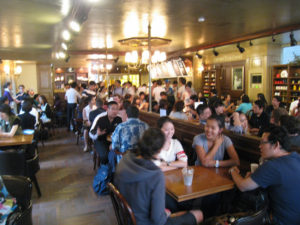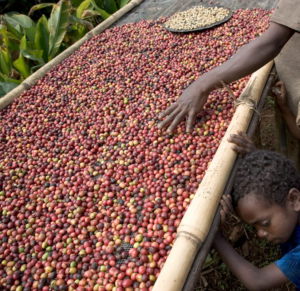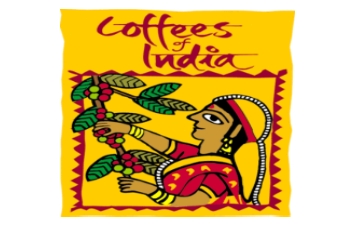Korea: The Coffee Republic
 Everyone, I suppose, knows the song “Gangnam style” the K-pop single by the South Korean rapper Psy that on December 2012 became the first YouTube video to reach one billion views. Well, this song satirized “a classy girl who know how to enjoy the freedom of a cup of coffee”. In these words, all what is going on in South Korea: Coffee has become a powerful indicator of class status symbol. Moreover, coffee is the number one beverage in the country (53% of the total drink market) and has even surpassed the demand for “kimchi”, South Korea’s national dish (according to a study by the International Business Times).
Everyone, I suppose, knows the song “Gangnam style” the K-pop single by the South Korean rapper Psy that on December 2012 became the first YouTube video to reach one billion views. Well, this song satirized “a classy girl who know how to enjoy the freedom of a cup of coffee”. In these words, all what is going on in South Korea: Coffee has become a powerful indicator of class status symbol. Moreover, coffee is the number one beverage in the country (53% of the total drink market) and has even surpassed the demand for “kimchi”, South Korea’s national dish (according to a study by the International Business Times).
On average, the study showed, South Koreans drink coffee 12.2 times per week; they eat “kimchi“, a mix of fermented vegetables that has been a part of the Korean diet since the 1500s, 11.9 times per week and white rice only 6.9 times per week. To drink a fresh bean coffee is not always cheap. In Seoul, a “cup of Joe (COJ)” is more expensive than in the U.S. (about $3.80 against $2.25 on average).
To drink a coffee at Starbucks is a sort of status symbol, generally represented by young girls satirically known as “doenjang nyeo” (literally “bean paste girls”), youngsters who are so concerned with affording conspicuous luxuries that they’ll skimp on meals (doenjang is a fermented soybean paste used to make one of the country’s cheapest dishes). In South Korea, coffee lovers are overall girls. In effect, when Starbucks arrived in the country, in 1999, it opened its first branch in Seoul inside a prestigious all-female university.
 Today we can see hundreds of cafes, each with its own decorative style, that offer many amenities (Wi-Fi, board games, TVs, books and even laptops) and where people can easily spend all day with a coffee mug in hand. Coffee has become an integral part of everyday life and some media even uses the nickname “the Coffee Republic“. Over the past few years, Korea’s coffee consumption has risen incredibly sharply. It represents about 6% of the total Asia & Pacific coffee market and is one of the leading markets in the world.
Today we can see hundreds of cafes, each with its own decorative style, that offer many amenities (Wi-Fi, board games, TVs, books and even laptops) and where people can easily spend all day with a coffee mug in hand. Coffee has become an integral part of everyday life and some media even uses the nickname “the Coffee Republic“. Over the past few years, Korea’s coffee consumption has risen incredibly sharply. It represents about 6% of the total Asia & Pacific coffee market and is one of the leading markets in the world.
Specialist coffee shops have passed 12 thousand units and the demand for fresh roasted bean coffee is increasing (in 2015 about 7 million roasted tons arrived in the country, in particular from the USA, Italy, Japan and Switzerland that represent together about 80% of imports). Consumption of Arabica is about two thirds compared to one third of Robusta and Korean coffee lovers are thinking more and more about coffee quality and social responsibility.
But coffee as a symbol of class status can only describe one aspect of Korean coffee culture otherwise it would not be understandable why instant coffees are still the top-selling products in Korea’s coffee market (such as “3 in 1 coffee mix”, a mix of grind coffee beans, sugar, and creamer). About 75%-80% of coffee consumption (1.9 million bags according to ICO in 2015) is instant coffee and only the remaining part represents fresh roasted or bean coffee. Most “laborious” Koreans have a “Pali-Pali” culture which means “Hurry-Up or Faster” and they prefer to eat and drink fast. The quick (and sometimes cheap) instant coffee can be easily consumed everywhere such as at home, school, offices, coffee machines etc.
The “Coffee-mix” is quite addictive and common in Korea, and there are many Koreans who drink 3-4 cups of coffee-mix every day, and this explains the extraordinary numbers per capita coffee consumption. Deepening these aspects is very important for companies, which are investing or are approaching this market, as well to evaluate the right figures for budget or strategies. In 2015, CoffeeBI calculated a total coffee consumption in South Korea of 63 million tons (about 25 million coffee cups) for a value of 1.1 billion Euros (at sell-in prices).



